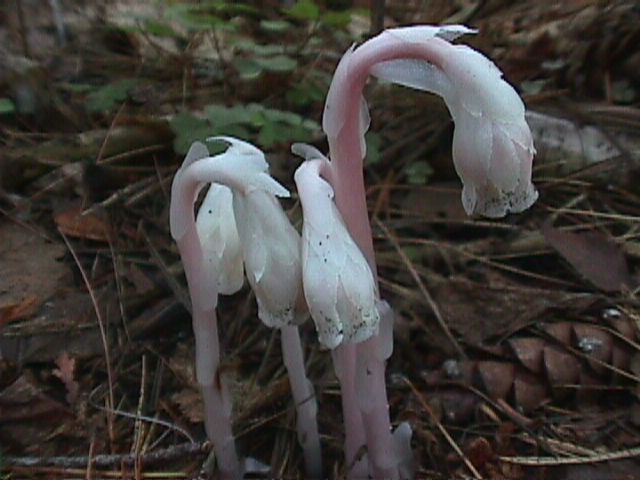


The translucent, flowering plant known as the Indian Pipe is a perennial that relies on small, wood-rotting fungi for nutrients that enable its growth.While considered an herb, the Indian Pipe (Monotropa uniflora) is not green, but rather a translucent white plant that grows as a clump of stalks averaging seven inches high, which have scales on the stem and flowery heads drooping at the top. The flowers bear a small fruit that has very small seeds.
The plant’s color can vary from white, to pinkish, to white with black spots. An herb that closely resembles the Indian Pipe is the reddish-colored Pinesap (Monotropa hypopitys), sometimes called “Dutchman’s Pipe.”
Indian Pipes Don’t Manufacture Food by Photosynthesis
The Indian Pipe, also known as “Corpse Plant,” “Ghost Flower,” or “Fits Root,” is found across North America in shady woodland areas and temperate Asia, Central and South America. In the U.S. it can be found from mid-summer to early fall, as the warmer months produce the right conditions of moisture and temperature necessary for growth.
Unlike green plants, which contain chlorophyll to aid in the process of photosynthesis—the use of sunlight to convert carbon dioxide and water to carbohydrates, which feed the plant—the Indian Pipe does not contain chlorophyll. It turns from its waxy, white form to black when it is picked, damaged or dried out. Because it does not rely on photosynthesis, the Indian Pipe can grow in very dark conditions.